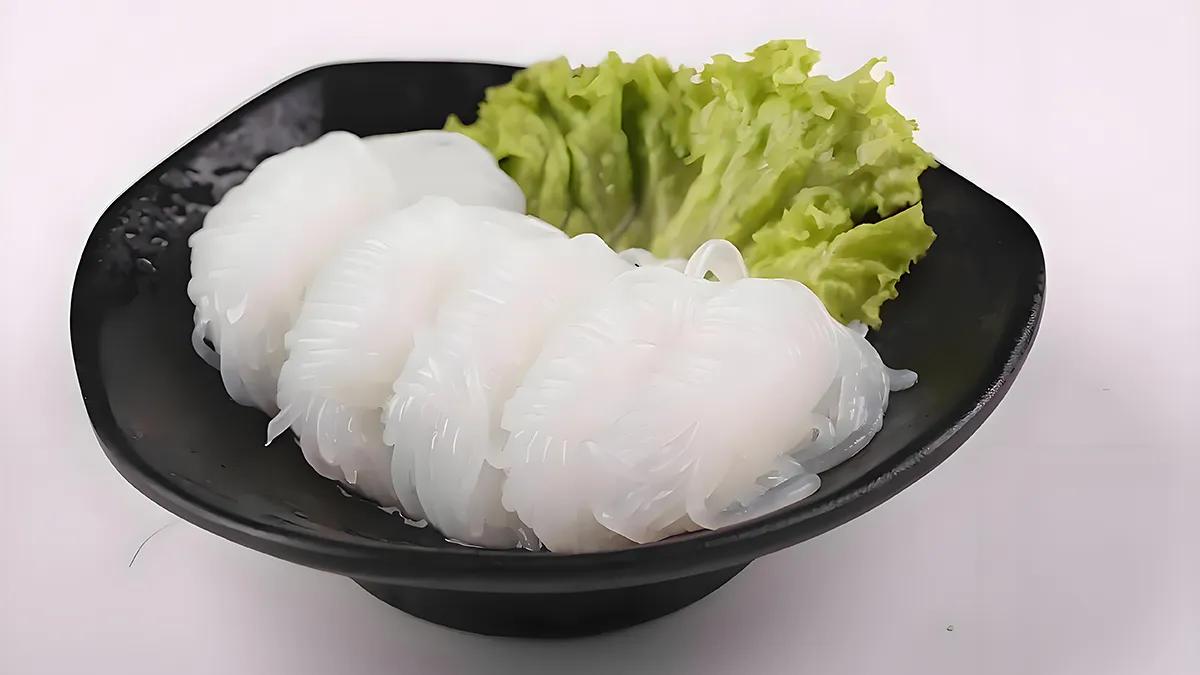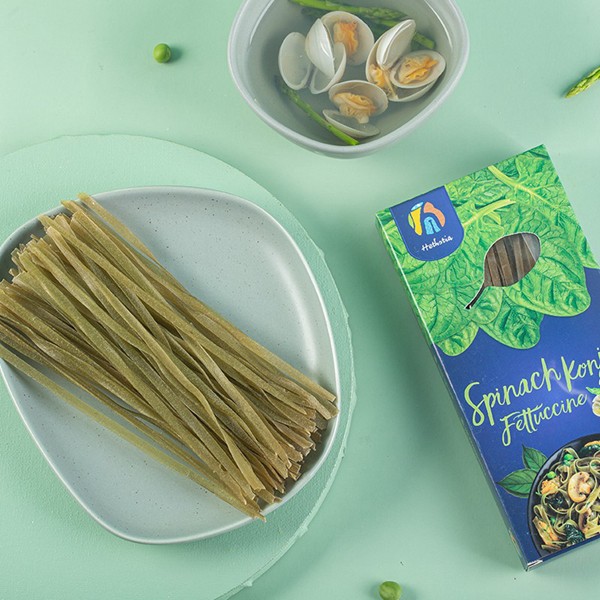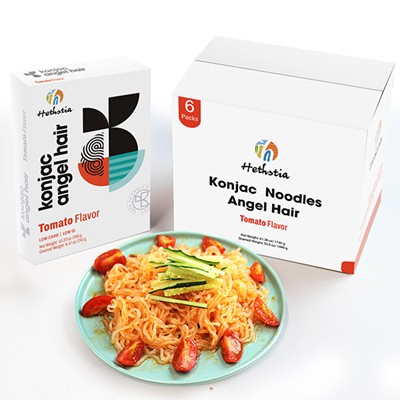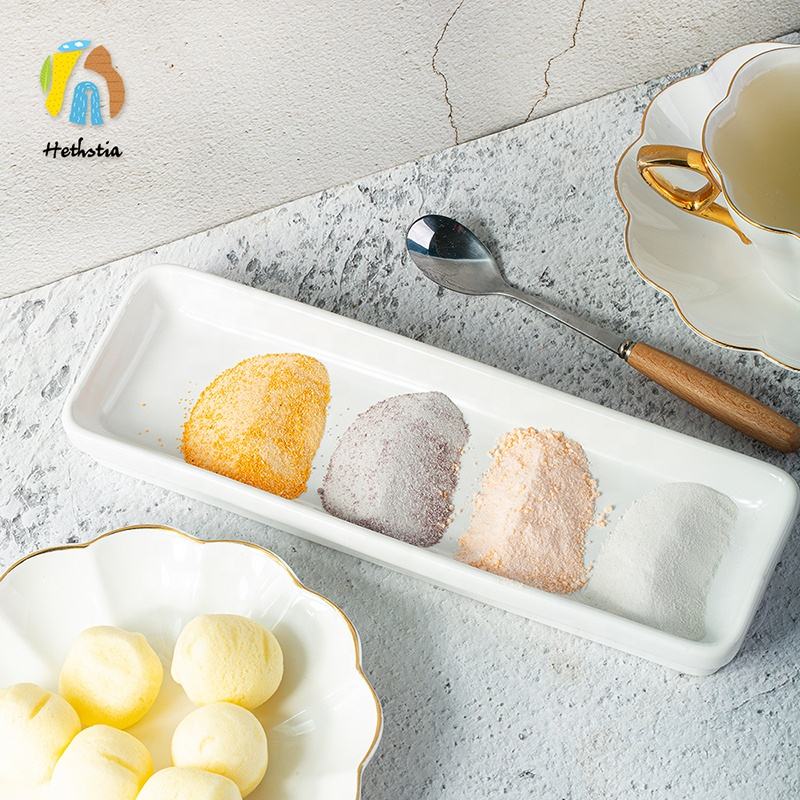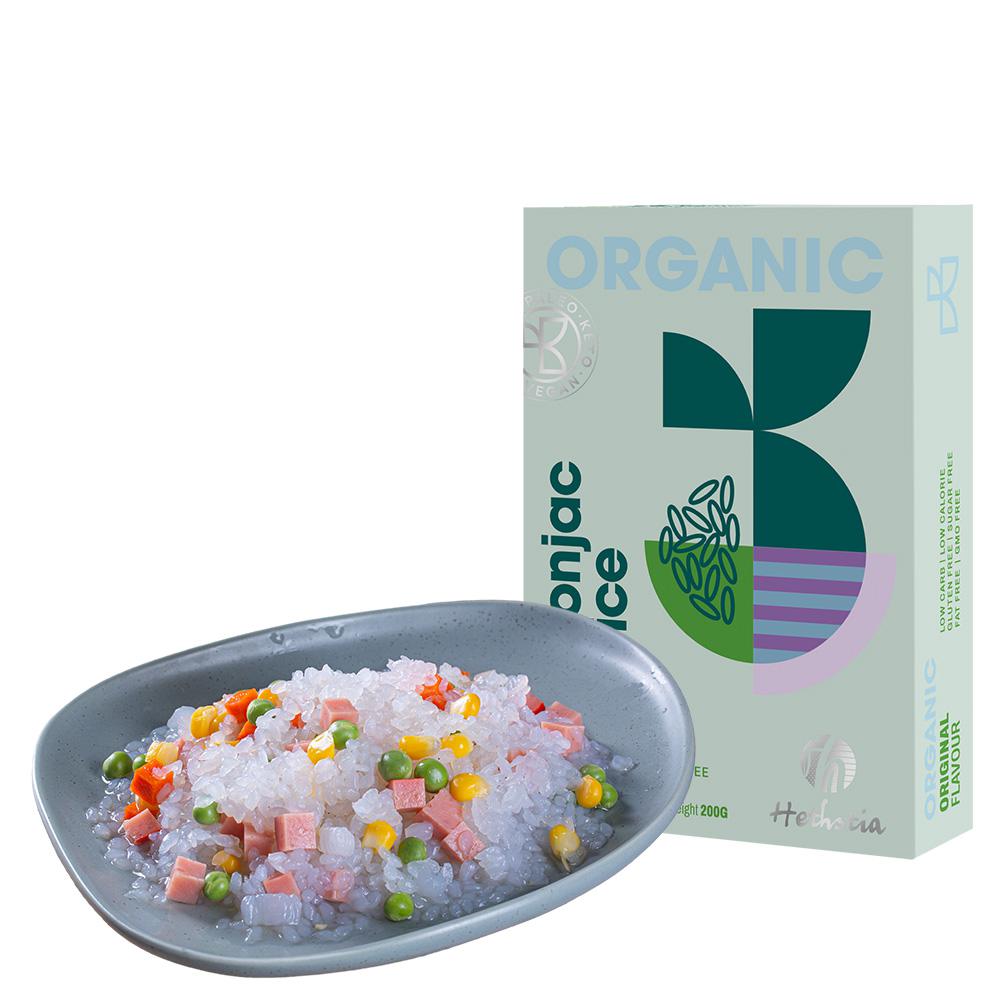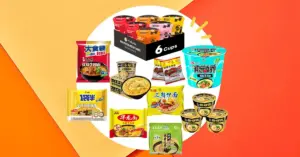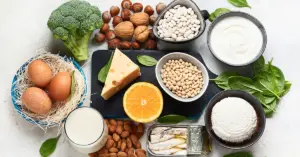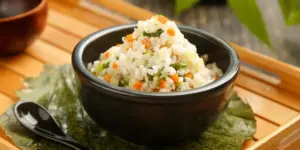1. Nutritional composition and caloric analysis of konjac
Konjac has an ultra-low calorie characteristic. Every 100 grams of konjac contains only about 7 kcal of calories, while the exact weight of rice has 156 kcal, and the calorie difference is significant.
96%-97% of konjac is water; the rest is mainly glucomannan, which determines its low-calorie characteristic.
2. Physiological mechanism of action of glucomannan
Glucomannan is a water-soluble dietary fiber, mainly extracted from plants such as konjac. Its unique molecular structure gives it a variety of physiological functions.
Glucomannan has a strong water absorption capacity and can absorb water dozens of times its weight to form a gel-like substance.
This gel-like substance expands in the stomach, increases the volume of gastric contents, slows down gastric emptying, and thus produces a lasting feeling of fullness and reduces food intake.
The gel-like substance formed by glucomannan can wrap food and slow down the digestion and absorption of food in the intestine. In particular, it can slow down the decomposition of carbohydrates and the absorption of glucose, avoid the rapid rise of blood sugar after a meal, and help control blood sugar levels.
Glucomannan can absorb bile acid and promote its excretion from the body, thereby lowering the cholesterol level in the blood.
Glucomannan can increase the volume of stool, soften stool, stimulate intestinal peristalsis, and promote defecation.
As a prebiotic, it can also promote the growth of beneficial intestinal bacteria, maintain the balance of intestinal flora, and improve intestinal health.
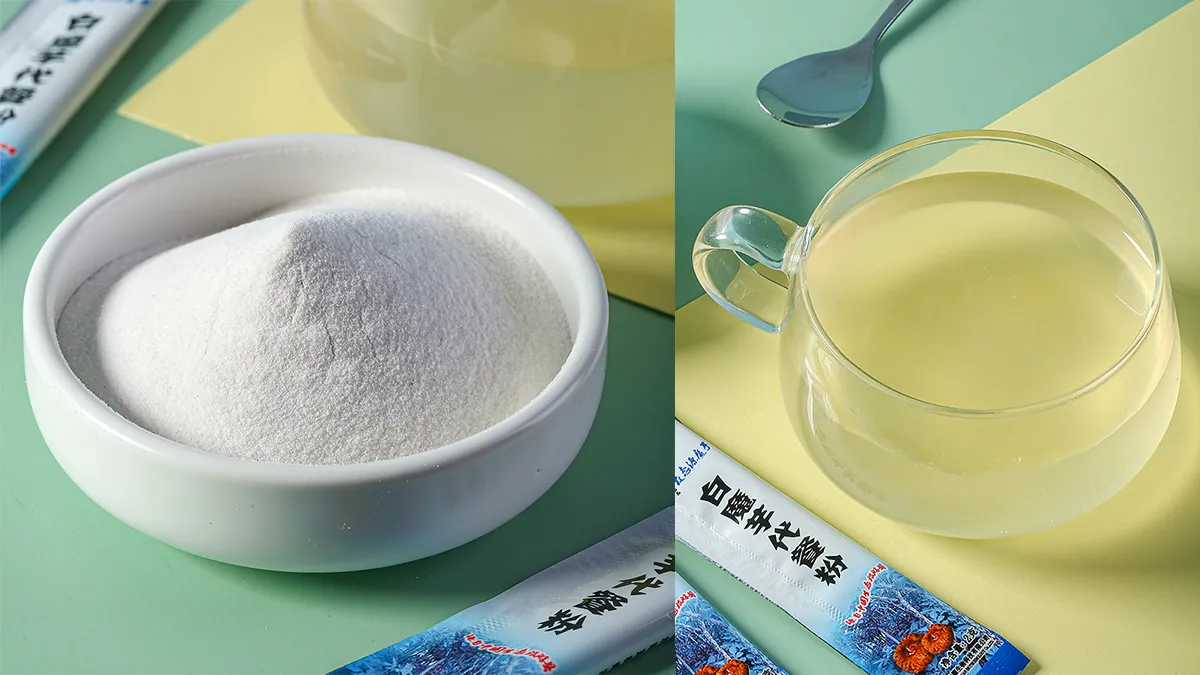
3. Research Data on Glucomannan and Weight Management
3.1. Study 1: Effect of glucomannan on body weight after continuous use for 8 weeks
Research method:
The subjects were obese people. The experimental group took glucomannan for 8 weeks, and the control group took a placebo.
During the study, the participants’ eating and exercise habits did not change significantly.
Research results:
In the experimental group, more than 70% of the participants lost weight, with an average weight loss of about 2.5-4 kg.
The main reason for the weight loss was that the water-absorbing and swelling properties of glucomannan increased satiety and reduced calorie intake.
No significant weight changes were observed in the control group.
Conclusion:
Continuous use of glucomannan for 8 weeks can effectively help obese people control their weight, and its main mechanism is to increase satiety and reduce food intake.
3.2. Another study aimed to evaluate the effects of short-term consumption of glucomannan granules on appetite and satiety.
Research method:
Participants took glucomannan granules daily for 4 weeks.
Participants’ satiety and appetite changes were assessed through questionnaires and food records.
Research results:
More than 80% of participants reported a significant increase in abdominal fullness and a significant decrease in appetite after taking glucomannan granules.
The average daily calorie intake of participants was reduced by about 15-20%.
The study also found that the satiety effect of glucomannan was particularly significant when taken before meals.
No significant weight changes were observed in the control group.
Conclusion:
Short-term use of glucomannan granules can effectively increase satiety and suppress appetite, thereby reducing calorie intake and helping weight management.
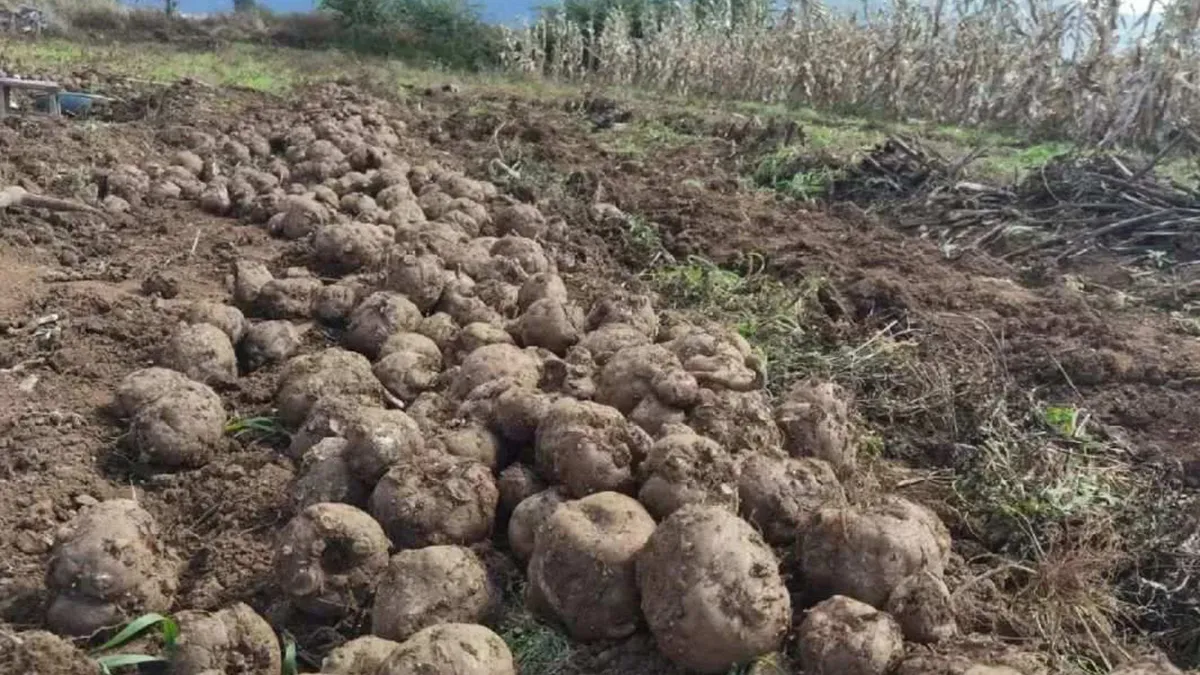
4. Konjac product types and applicable scenarios
4.1. Konjac Shreds
Features: Long and thin shreds, smooth and chewy, easy to absorb the flavor of the soup.
Applicable scenarios:
Cold salad: Mix with cucumbers, carrots, and other vegetables, refreshing and appetizing.
Hot pot: As a side dish for hot pot, it absorbs the essence of the soup and has a rich taste.
Stir-fry: Stir-fry with meat and vegetables to increase the taste level.
Features: Block-shaped, fine texture, tastes similar to traditional tofu, but firmer.
Applicable scenarios:
Stew: Stew with meat and vegetables, absorb the soup and taste delicious.
Fry: Fry until crispy on the outside and tender on the inside, and pair with dipping sauce for a unique flavor.
Grill: Cut into small pieces and string them together, sprinkle with seasoning after grilling, spicy and delicious.
Features: Long and thin strips, chewy texture, low calories, low carbohydrates.
Applicable scenarios:
Staple food replacement: As a substitute for rice and noodles, reduce calorie intake.
Salad: Make salads with vegetables and fruits, healthy and delicious.
Soup noodles: Add soup base and side dishes to make low-calorie soup noodles.
Features: Granular, similar in appearance to rice, low in calories and carbohydrates.
Applicable scenarios:
Rice substitute: As a substitute for rice, reduce calorie intake.
Fried rice: Stir-fry with vegetables and eggs to make low-calorie fried rice.
Porridge: Add water and seasonings to cook into low-calorie porridge.
4.5. Konjac meal replacement
Features: Usually konjac flour is used as the main raw material, and other nutrients are added to make meal replacement powder, meal replacement bars, etc.
Applicable scenarios:
Weight management: As a meal replacement food, it controls calorie intake and assists in weight loss.
Convenient diet: Convenient and fast, suitable for busy office workers or students.
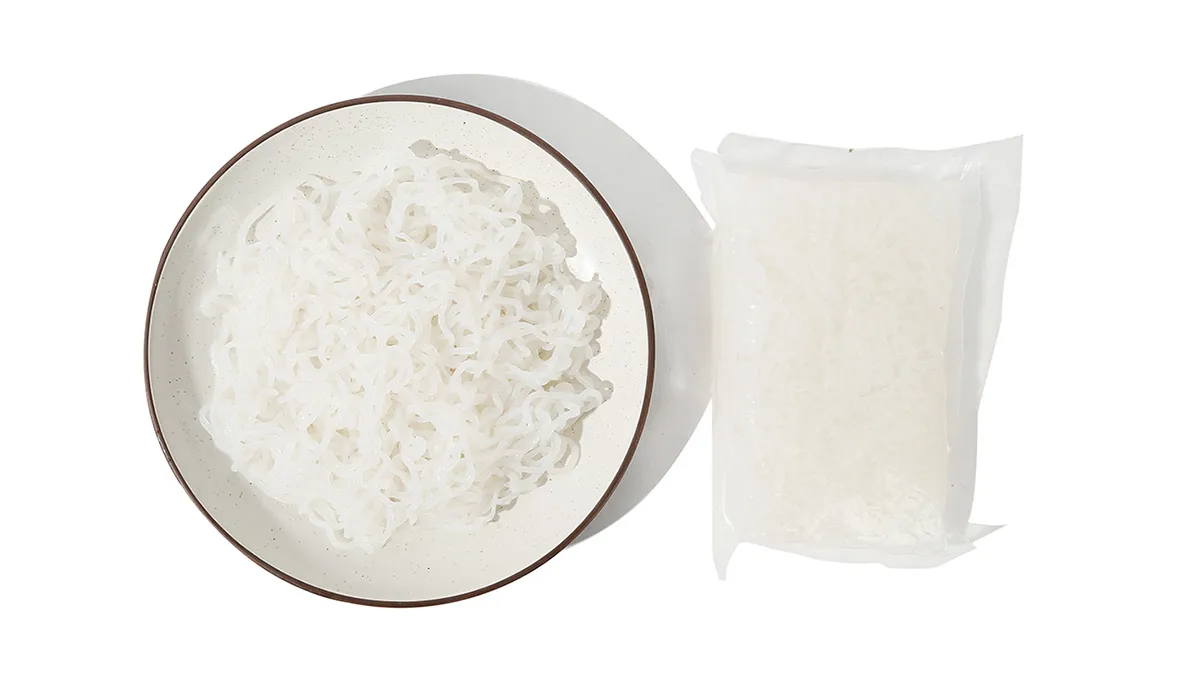
5. Konjac for weight loss recipe sharing
Ingredients: shredded konjac, cucumber, carrot, coriander, minced garlic, soy sauce, balsamic vinegar, sesame oil, chili oil (optional)
Method:
Rinse the shredded konjac with clean water, blanch, and drain.
Slice cucumber and carrot, and cut coriander into sections.
Put shredded konjac, cucumber, carrot, and coriander into a bowl, add minced garlic, soy sauce, balsamic vinegar, sesame oil, and chili oil (optional,) and mix well.
Features: Refreshing and appetizing, low in calories, rich in dietary fiber.
5.2. Konjac Fried Rice
Ingredients: Konjac shreds, overnight rice, eggs, chopped green onions, diced carrots, green beans, corn kernels, soy sauce, salt, pepper
Method:
Dice the konjac shreds and beat the eggs for later use.
Pour oil into a hot pan, pour in the egg liquid, and stir-fry.
Add a little more oil to the pan, add chopped green onions, and stir-fry until fragrant, then add diced carrots, green beans, and corn kernels and stir-fry.
Add diced konjac and overnight rice and stir-fry evenly, add soy sauce, salt, and pepper to taste.
Finally, add the fried eggs and stir-fry evenly.
Features: Rich taste, low calories, can be used as a staple food substitute.
5.3. Konjac Pork Rib Soup
Ingredients: Konjac shreds, pork ribs, tofu, ginger slices, scallions, cooking wine, salt
Method:
Wash and blanch the pork ribs, remove and drain.
Pour water into the pot, add the pork ribs, ginger slices, scallions, and cooking wine, bring to a boil over high heat, then simmer over low heat for 1 hour.
Add konjac shreds and tofu and continue to simmer for 15 minutes.
Finally, add salt to taste.
Features: The soup is delicious, nutritious, low in calories, and suitable for supplementing nutrition during weight loss.
5.4. Konjac Chicken Salad
Ingredients: Konjac shreds, chicken breast, lettuce, cherry tomatoes, cucumber, low-fat salad dressing
Method:
Cook the chicken breast and tear it into shreds. Blanch the Konjac shreds and drain.
Wash the lettuce and tear it into small pieces. Cut the cherry tomatoes in half and slice the cucumber.
Put all the ingredients in a bowl, add the low-fat salad dressing and mix well.
Features: Low in calories, high in protein, suitable for lunch or dinner during weight loss.
5.5. Konjac Yogurt Cup
Ingredients: Konjac rice, yogurt, fruits (such as strawberries, blueberries, bananas, etc.), nuts (such as almonds, walnuts, etc.)
Method:
After the konjac rice is cooked, remove it drain it, and let it cool for later use.
Put the konjac rice, yogurt, fruits, and nuts in the cup in order.
Features: Low in calories, rich in nutrition, suitable as breakfast or snack during weight loss.
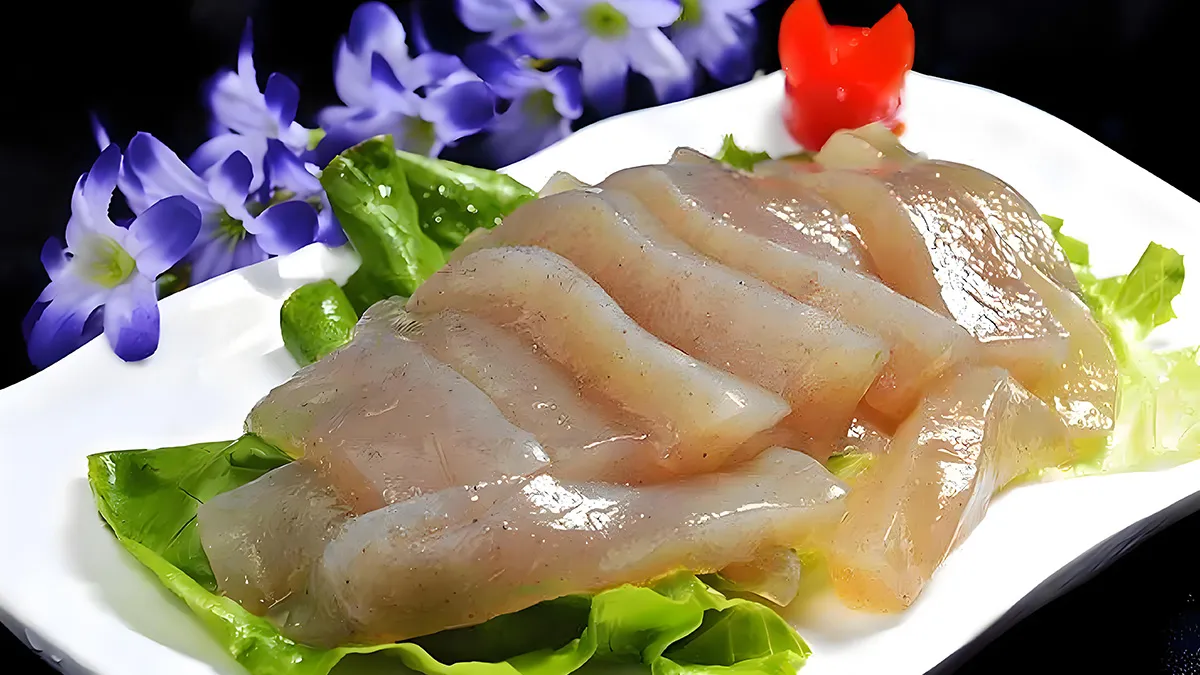
6. Incorporating Konjac into a Long-term Healthy Lifestyle: The Key to a Balanced Diet
As a low-calorie, high-fiber healthy ingredient, konjac should not be viewed merely as a short-term weight loss method but should be integrated into a long-term healthy lifestyle.
A balanced diet, comprehensive nutrition: Don’t rely on konjac alone, but make it part of a balanced diet. Make sure to take in vegetables, fruits, whole grains, high-quality protein, and vitamins from healthy fats.
Even if konjac is low in calories, you should pay attention to controlling the intake to avoid excessive consumption that leads to excessive calories.
Although konjac supplements dietary fiber, it has a low content of other nutrients. Therefore, it is necessary to supplement protein, vitamins, and other nutrients through other foods.
Pair konjac with fresh vegetables: Pair konjac with various fresh vegetables, such as cucumbers, carrots, spinach, broccoli, etc., to increase the intake of dietary fiber, vitamins, and minerals.
Pair konjac with high-quality protein: Pair konjac with high-quality protein sources such as chicken breast, tofu, and fish to supplement protein and promote muscle growth and repair.
Other healthy lifestyle suggestions:
Do at least 150 minutes of moderate-intensity aerobic exercise per week, such as brisk walking, swimming, cycling, etc.
Ensure adequate sleep of 7-8 hours a day to help control appetite and maintain metabolism.
Learn to manage stress and avoid emotional eating.

